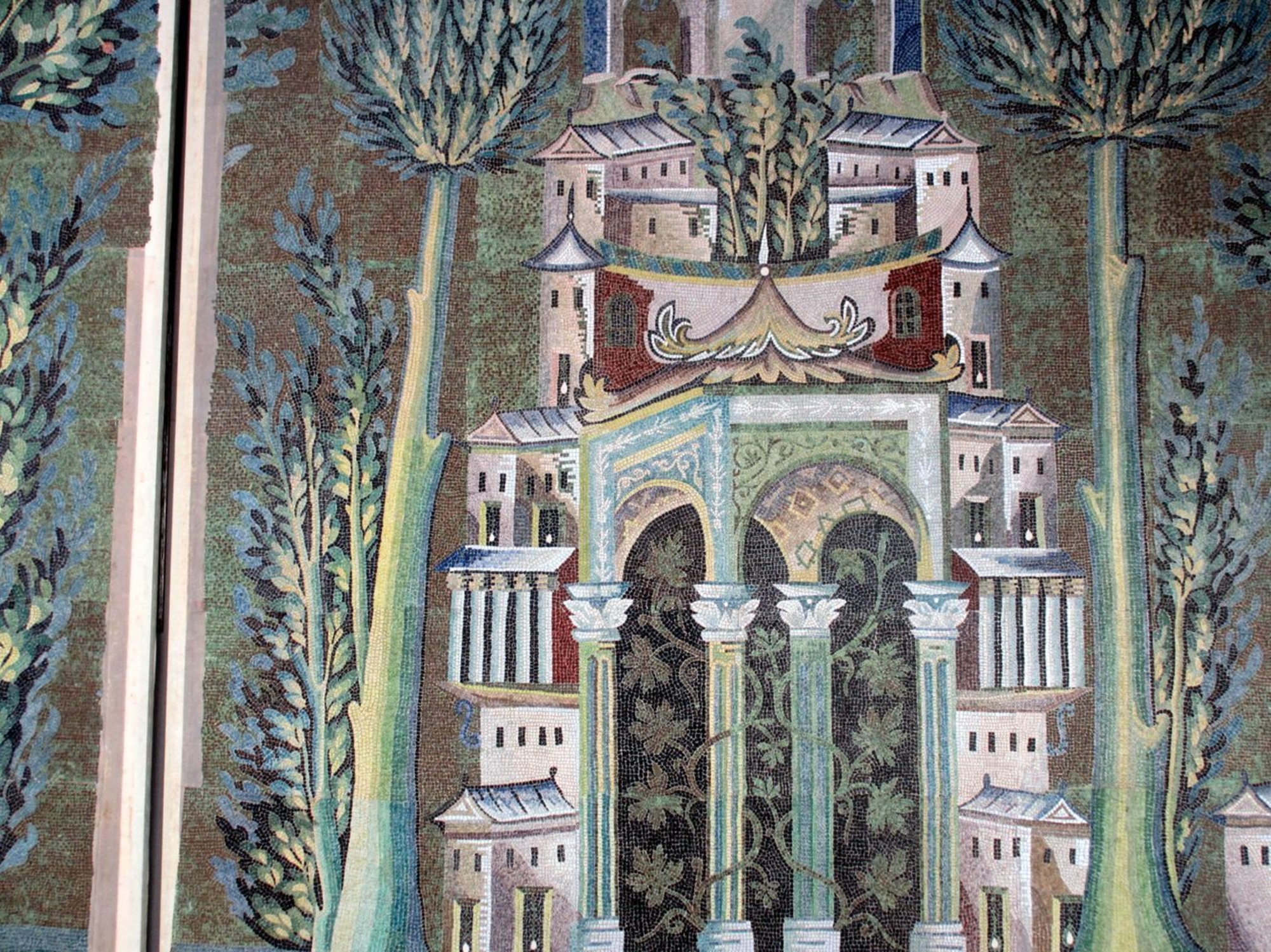- Home
- The mosaic decoration
- Origins of the technique
Floor mosaics: an abandoned ancient technique
Mosaics were also used to decorate floors. The tesserae were made from stone, a material that wears well under foot. The floor mosaic was initially a Greco-Roman technique, which then spread across the Mediterranean region and, on the eve of the Arab invasions, was still very much in use in Syria, especially in churches. However, with the rare exception of the palace of Khirbat al-Mafjar near Jericho, floor mosaics were largely abandoned by the Umayyad caliphs.
Wall mosaics: a brilliant art
By contrast, wall mosaics were a common feature of prestigious buildings under the Umayyad caliphate. These mosaics were almost exclusively composed of glass tesserae coloured to produce a shimmering, polychrome effect. A technique typical of Byzantine imperial art, there are no examples in Syria before the arrival of the Umayyads. The art of mosaics reached the height of virtuosity in the Byzantine Empire, and entered a golden age in the 6th century. Byzantine mosaics typically have a gilded background signifying divine light.
Who made mosaics for Umayyad buildings?
Ancient Arabic texts suggest Umayyad mosaic decorations were the work of Byzantine and Coptic craftsmen. Though we cannot be sure where the mosaicists were from, the technique clearly originated in Byzantium.
In the 8th century, the Byzantine Empire was the main rival of the Umayyad caliphs in the Mediterranean. Feared adversaries, their art was nonetheless much admired for its beauty.
